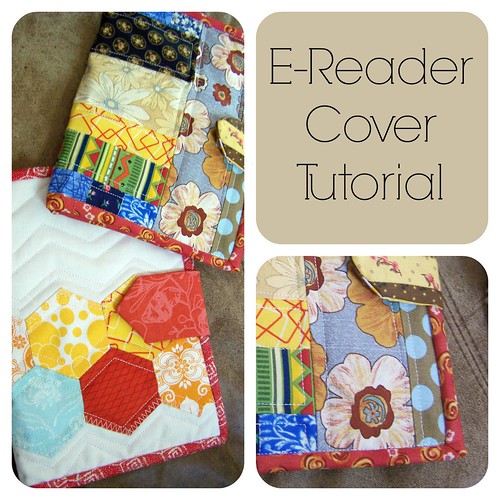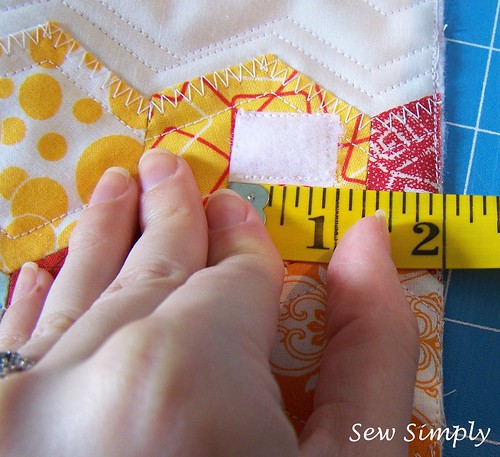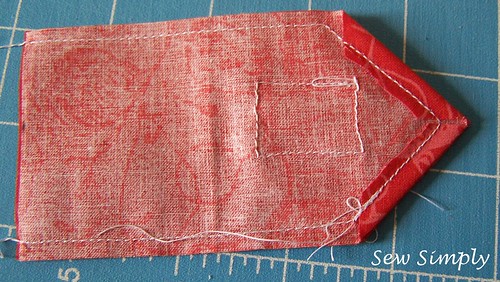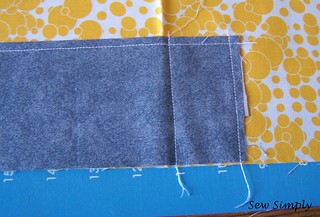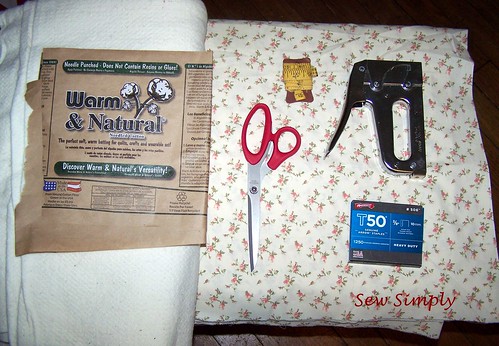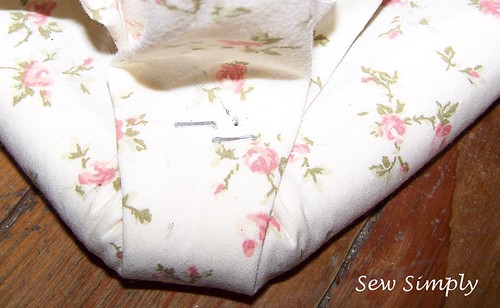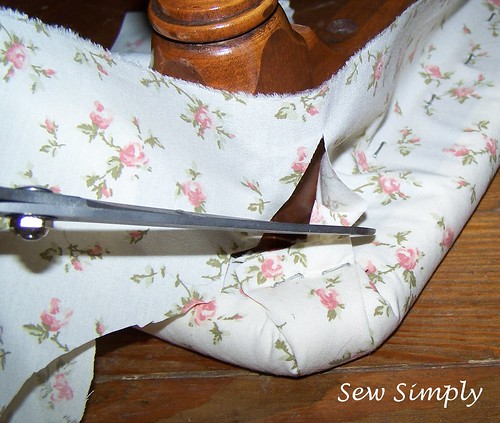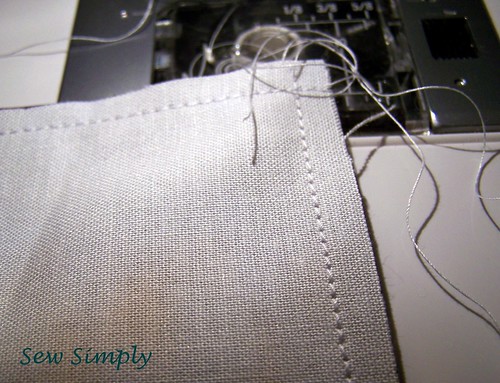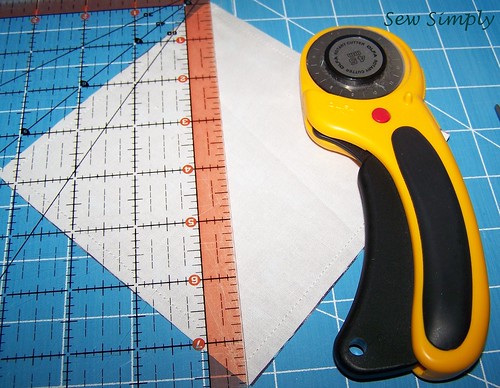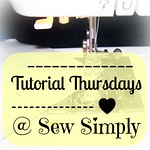
So here are my measurements The nook itself is 5" x 7-3/4" Since my nook is about half an inch thick, and it needs to have a cover plus room for the quilting and lining, I'm going to double the width and add 2 inches. (5" x 2 = 10" + 2" = 12"), The height, I'll add 3/4" to make sure I have room for the elastic to hold the thing in, the dimensions of my quilted cover will be 12" x 8-1/2".
Materials Needed:
- Quilted piece for the front conforming to the measurements we calculated above. (mine is 12" x 8.5")
- 2 coordinating pieces for the lining which are cut 1/2" narrower and the same in height (instead of 12" cut 11.5" x 8.5")
- A 1-1/2" WOF strip for binding
- Scraps for closure and pocket (pocket optional)
- Velcro for closure
- Elastic
- Sewing Machine, Needle and Thread, and a lot of creativity!
Creating the Closure
The next thing I did was create the closure. You can choose any closure type you like, but I did a simple strap and velcro setup. NOTE: You need to attach the closure BEFORE you attach the lining since the velcro is attached directly to the cover.
With the outside facing up (the right side of the quilt), the front of the cover is on the right. Attach half of the velcro to this side. Be sure to measure in from the edge a good two inches (as shown), and make sure the closure will be centered vertically.
Cut out two pieces of fabric of choice for closure. I cut mine about 2 inches longer than the distance from the edge on the front (2" + 2" = 4" long). Attach the other half of the velcro to the right side of one of the pieces.
Sew the two pieces together, right sides facing each other. Do not close in the flat edge (as shown below), that is how you will turn your strap right side out and attach it to the cover. After it's stitched, you can trim up some of the fabric to reduce bulk once it's turned right side out, reduce bulk in any way desired - after this picture, I snipped off the point on my strap.
Attach the closure to the "back" of the cover (the left side) as shown. Now let's move to the lining.
Making the Lining
For the lining, I used two pieces of the same blue fabric that the single blue hexagon is made from. Again, I cut them 1/2" shorter than the cover itself to create the pocket openings in the middle.
From here on out I used photos from a second cover that I made ---
If you desire: Use a light to medium interfacing inbetween the two halves of the lining (inside the fold).
For the e-reader side: measure 1.5 inches in from all corners as shown below. This is your guide for attaching the elastic.
On all sides except the folded side (which will be the only side that is not covered with binding) stitch the elastic at 1/8" and 1/4" in. This will help prevent the edges from folding in.
For the other side - I attached a simple pocket I salvaged from my scraps (optional). I used these steps to construct it:
This piece was a wider piece that I pressed in half and edge-stitched with a 1/4" seam.
I placed a seam near the folded part of the lining piece and another one further in to secure it. Refold the fabric in half to finish attaching the pocket.
I used a rough 1/8" seam here, just to seal the bottom and side of the pocket.
Next, pin the two pieces of lining to the quilted outside cover. NOTE: Make sure you are pinning them to the correct sides.
Stitch the lining all the way around the whole cover (back-stitch if you want) with a 1/4" seam.
Bind with the 1.5" WOF strip.
And you're done! If you have any questions at all about this tutorial, feel free to leave them as a comment, or email them directly to me here.
Thanks for reading, and please share pics of your covers with me in my Flickr Group. I would love to see them! :)
- Cassie

Now I'd like to see your tutorials and projects - Link up!

